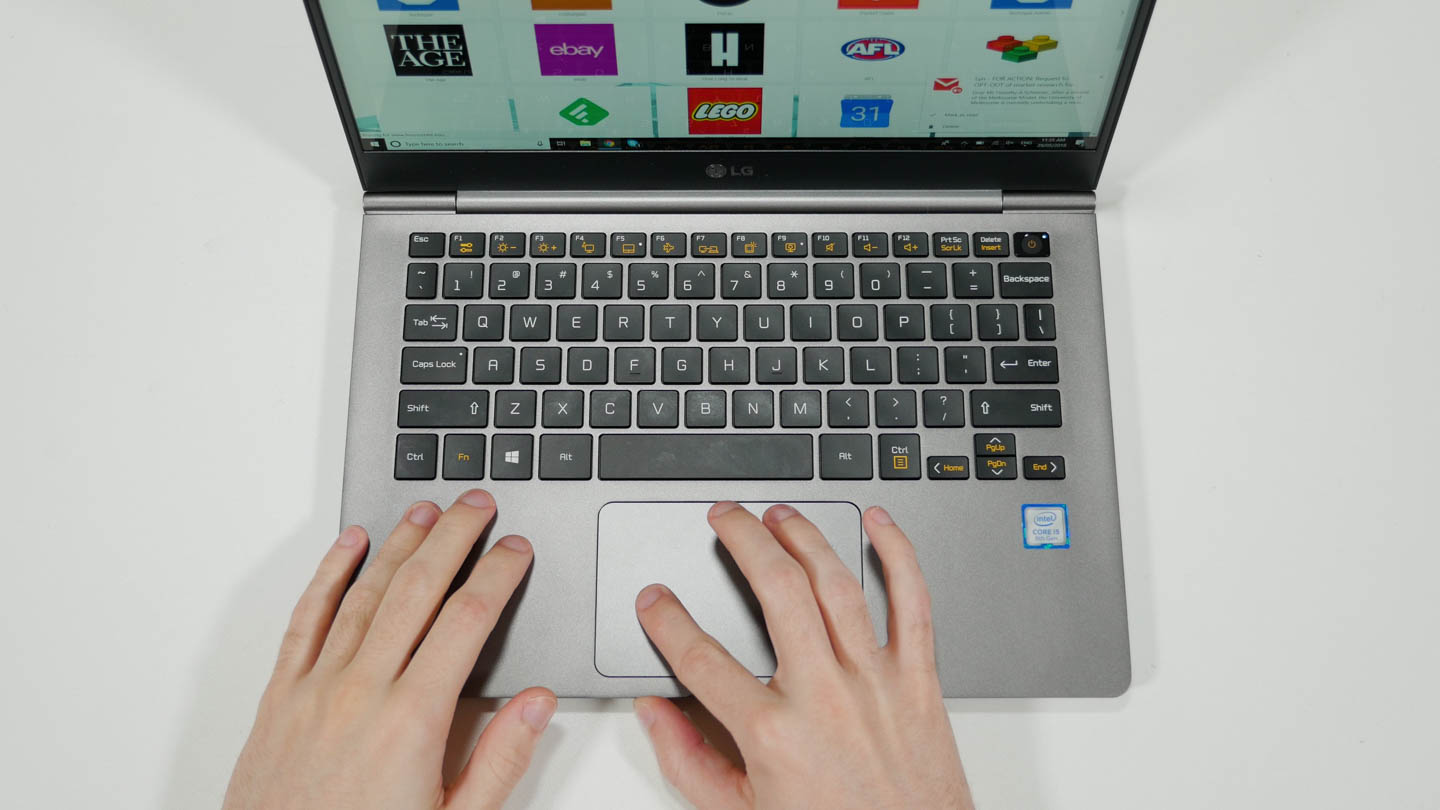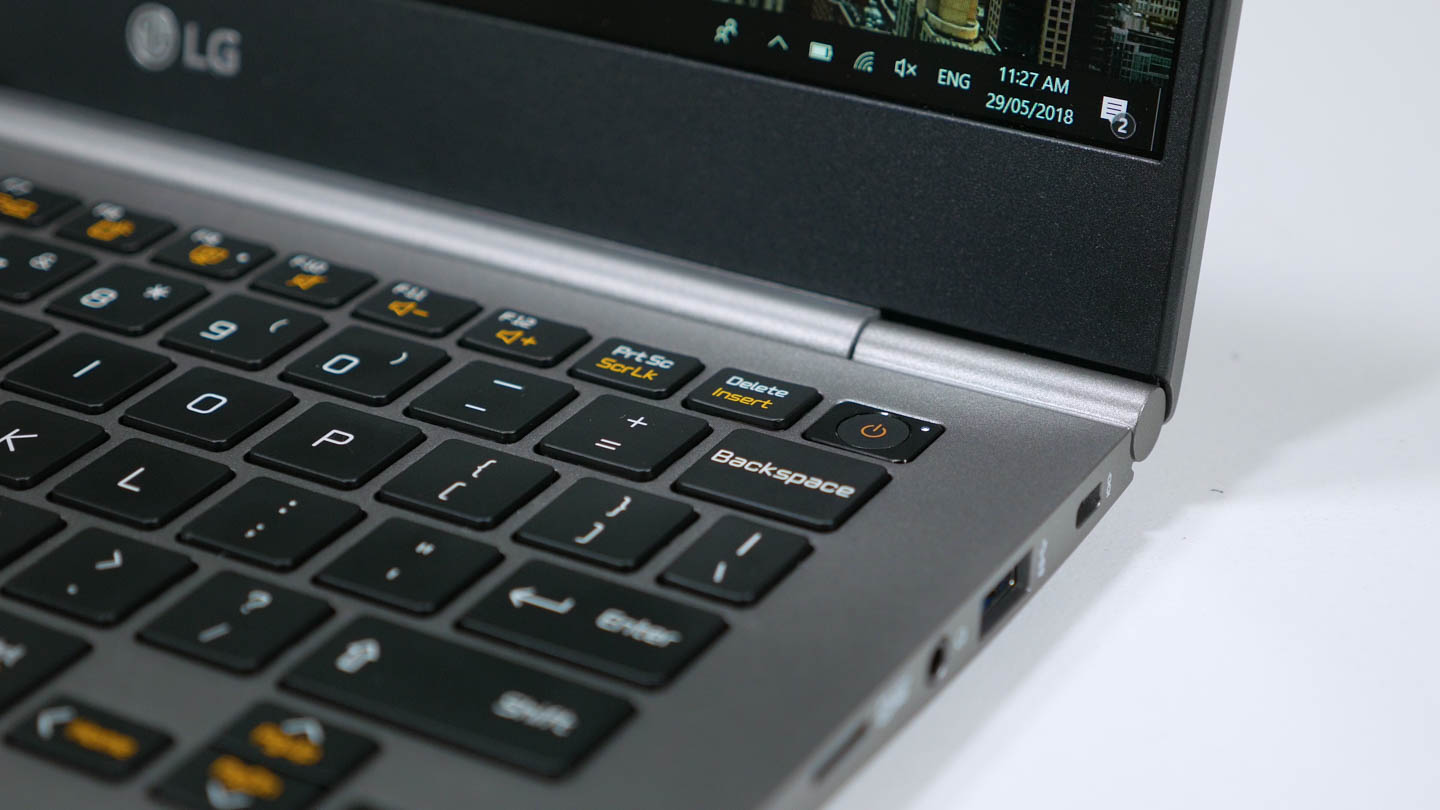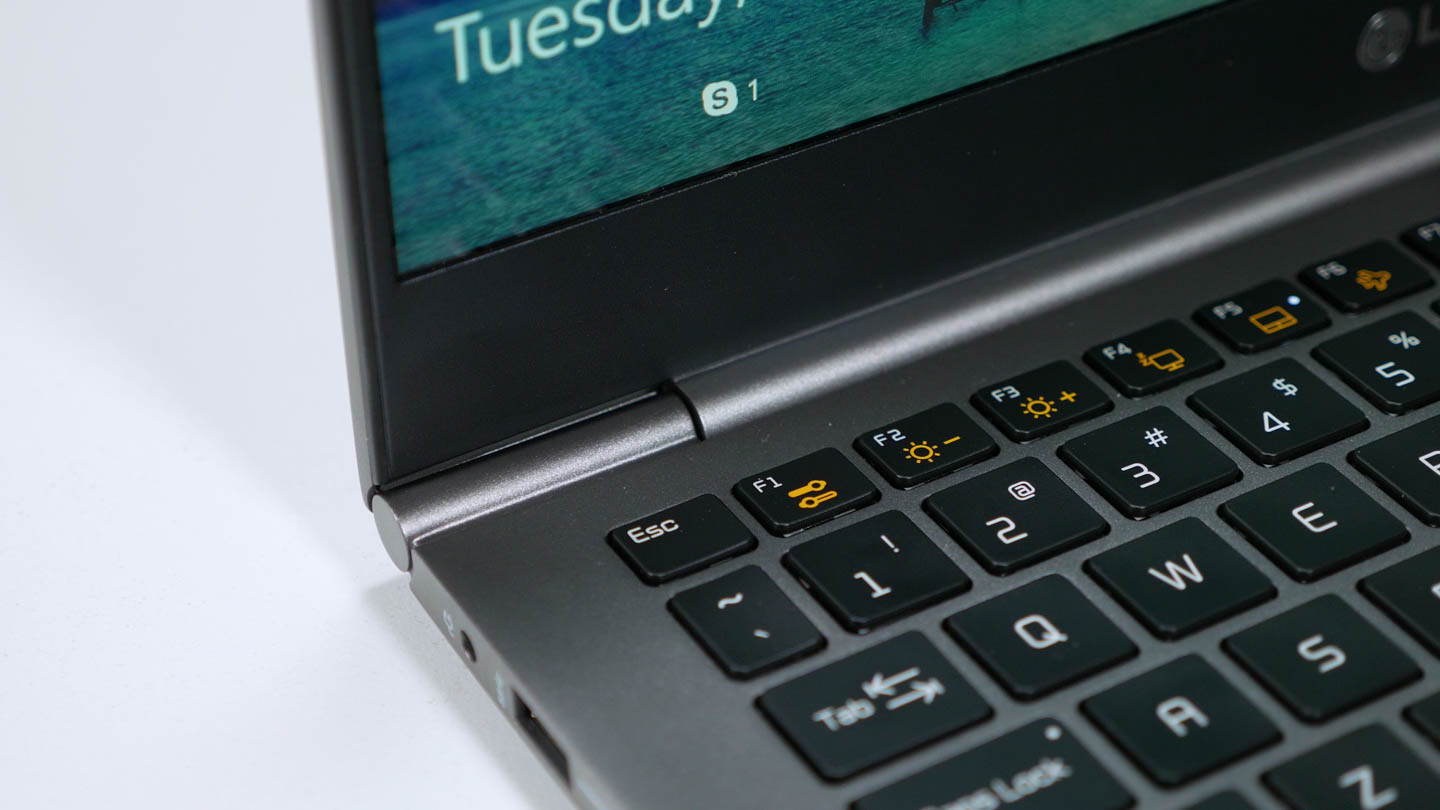Today we're looking at the LG Gram, which falls into our favorite category of laptops: high-end slim and light machines. This latest version of the LG Gram has been around for a few months now, and you might have already seen some reviews of the flagship 15-inch model. However when LG asked if we were interested in reviewing the Gram, we specifically requested the smaller 13-inch entry-level model. After all, a lot of buyers are interested in the more affordable configurations that they can easily carry around.
Most of the hardware here won't come as a surprise: we're looking at an Intel Core i5-8250U processor, though you can configure the system up to the i7-8550U. There's also 8GB of RAM, a 256GB SSD, a 13-inch 1080p display, and an enormous 72 Wh battery. All of this will set you back a touch under $1,000 or thereabouts on Amazon.
But the key feature of the LG Gram isn't the internal hardware, which is similar to a lot of other laptops at this price point. Instead, the major selling point is its portability, particularly its weight. The LG Gram 13 weighs just 965 grams (2.12 pounds), well below the typical 1.2 to 1.4 kilograms for a laptop of this size and class, and it's immediately noticeable. This is by far the lightest laptop I've held with this level of hardware inside, so if you're keen on portability, the Gram is a standout option.
Weight is where the Gram's portability comes from. The overall dimensions and footprint are similar to other laptops, with LG opting for slim but not invisible bezels around the display. Luckily, this approach to bezels has meant the webcam can remain above the display, so no nostril-vision like you get with the Dell XPS 13. At 15mm thick it's not amazingly thin either but around the same mark as other laptops, and the thickness does allow the laptop to include a full-sized HDMI port and two full-sized USB ports.
Speaking of connectivity, you also get a USB 3.0 Type-C port and a microSD card slot, along with a proprietary charging port. It's disappointing the Gram doesn't include Thunderbolt 3 on the 13" models - that feature is restricted to the larger 15-inch variant - and it also would have been nice if it charged through USB-C. We're not sure why LG opted for a microSD card slot over a full SD card slot either, as microSD isn't nearly as useful as full SD on a laptop like this.
With such a light laptop, you're probably wondering about build quality. The entire chassis is constructed from a magnesium alloy, similar to Microsoft Surface devices, however it doesn't feel quite as texturally magnificent as other premium metal builds and there's not a lot of visual interest to the design, for better or worse. For the most part it's a simple, functional design and for many buyers that will be perfectly fine.
As for durability, LG does state the laptop passes the MIL-STD-810G test suite, with shocks up to 20Gs and drops from over 1.2 meters. There's a bit of flex to the keyboard area but no more than a typical ultraportable; the real area of weakness we found was a significant amount of flex to the display assembly. It just feels weak and flimsy in that area, which is a by-product of weight reduction, though we don't think it's a big issue unless you enjoy bending the display in your spare time.
The keyboard and trackpad are both a standard affair for a laptop: nothing overly amazing but no glaring issue either. Each key has a solid if slightly rubbery response with an ultrabook-level travel distance; not quite as clicky as our favorite HP laptops, but we typed a lengthy document on this laptop and had no problems with the response or layout. The trackpad is large enough, very responsive and the sensitivity level is perfect for a power user.
If you love to use your laptop's built in speakers, I'd steer clear of the Gram. The speakers are not good, and the bottom-firing design tends to get blocked easily when using the laptop on your lap. Probably another area that was compromised when weight was cut. However there is a fingerprint reader integrated into the power button, and it works really well; we wish more laptops included fingerprint readers.
The display is a fairly typical ultraportable panel: it's a 13.3-inch IPS LCD with a resolution of 1920 x 1080 and a basic 60 Hz refresh.
Our review unit came with a touchscreen, however the base model on Amazon does not; the touch model is slightly more expensive and will feature slightly reduced battery life due to the digitizer.

Display performance is decent, with a peak brightness of 311 nits, contrast ratio of 1030:1 and acceptable viewing angles. LG seems to have calibrated the panel to a reasonable though not perfect standard, achieving a CCT average of 6613K, a greyscale average deltaE of 3.22, and average deltaEs between 2.5 and 3.0 across the saturation and ColorChecker tests. DeltaEs below 1.0 are dead accurate and anything below 2.0 is very good; the Gram is just outside these metrics and certainly better than other laptops I've looked at.
If you want to calibrate the LG Gram 13's display using software like SpectraCAL's CALMAN 5, you can achieve very solid results. With no impact to brightness or contrast ratio we pushed deltaEs below 1.0 across the board, improved the gamma, and tightened up the temperature response. That's about as good as you could hope for with this sort of display, and through maintaining 98% sRGB coverage, images still look fantastic.
The only real downside we found to the display is uniformity, and even then we're only talking about a deltaE deviance of about 3.0 along the bottom edge. There is no clear backlight bleed issue, it's just a small amount of unevenness in backlighting. Not a big deal and in general We're reasonably impressed with this display.






